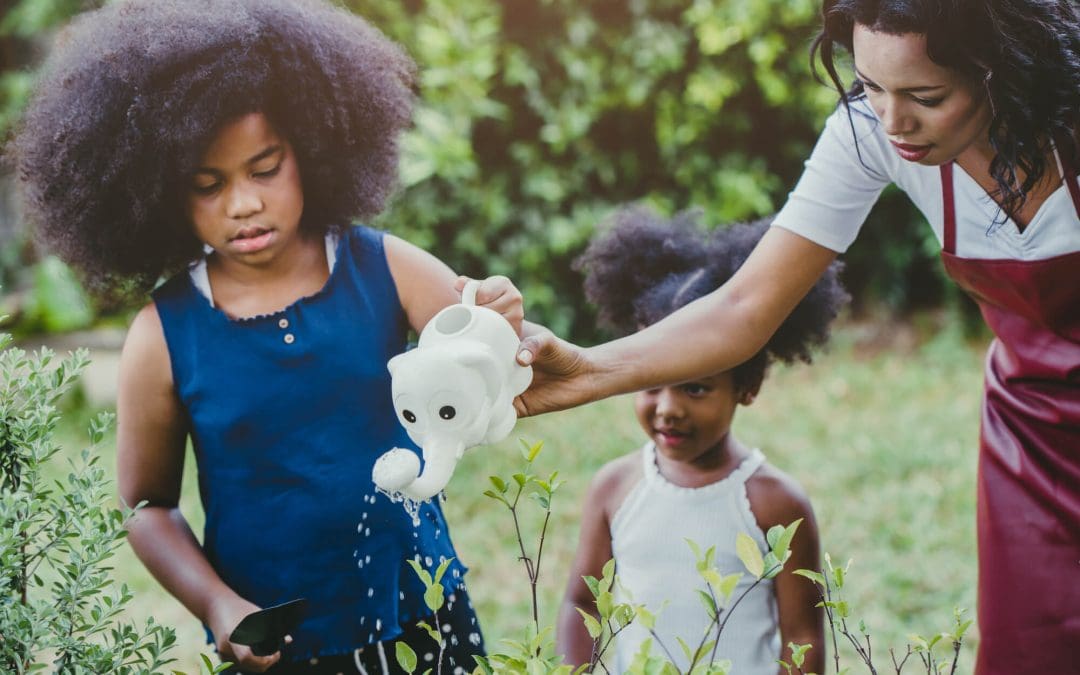Gardening with kids is one of the easiest ways to spend real, hands-on time together. It gives them a chance to learn, explore, and create something from the ground up. Even better, it’s not complicated. You don’t need a green thumb, a big yard, or fancy tools. You just need a little time, dirt, and a willingness to get messy.
Why Gardening Works So Well for Kids
Kids naturally like to dig, explore, and be outside. Gardening taps into that. It teaches them how things grow, what plants need, and what happens when you care for something over time.
They see the results of their actions. If they water a plant, it thrives. If they forget, it struggles. That kind of cause-and-effect stays with them. Gardening also builds confidence. Even pulling a single carrot out of the ground can make a kid feel like they accomplished something big. It gives them something real to be proud of. There’s also the bonus of fresh air, movement, and time away from screens. You don’t have to sell them on the benefits—they just come with the territory.
You Don’t Need a Farm to Get Started Gardening with Kids
No yard? No problem. A few containers on a patio or windowsill can work just fine. Let your kid pick out a plant they like. Tomatoes, lettuce, peas, and herbs are all solid starters.
Stick with plants that grow fast or show clear results. Sunflowers shoot up quickly, radishes grow in a few weeks, and strawberries are fun because kids get to grow something they like to eat.
Don’t overthink it. Give them a small space to manage. Let them water, dig, and harvest. The goal is for them to take part, not to make it perfect.
What Kids Learn in the Garden
Gardening teaches more than just plant names. It builds patience, focus, and responsibility. Kids see how long things take to grow and what happens when they’re ignored or cared for. They also learn where food really comes from. A kid who grows their own spinach is more likely to try it. The same goes for herbs, carrots, or anything else they’ve helped grow.
And beyond food, there’s curiosity. Worms, bugs, bees, and the weather all become part of the experience. You don’t need a science lesson—just let them observe and ask questions.
Keep It Fun, Not a Chore
If it starts to feel like work, kids will check out. Keep it light. Let them splash water, name their plants, or decorate the garden space. Some days, they’ll want to be out there digging; other days, not so much. Bring them back when something sprouts, blooms, or needs picking.
It Grows with Them
The beauty of gardening is that it can grow as your child does. You can start with one pot on the porch and build raised beds together in a few years. Even if you always stay small, the memories and skills stick.
Over time, you can introduce composting, crop rotation, or companion planting. But in the beginning, all you need is a little dirt, a few seeds, and some shared time.
FAQs on Gardening with Kids
What’s the best age to start gardening with kids?
Kids as young as two or three can help with simple tasks like digging or watering. By age five, most can manage basic planting and care on their own.
What are the easiest plants to grow with kids?
Try sunflowers, cherry tomatoes, radishes, lettuce, or mint. They grow fast and give quick, satisfying results.
What if we don’t have outdoor space?
Use containers on a patio or windowsill. Herbs, small vegetables, and even strawberries grow well in pots.
How do I keep my child interested long-term?
Let them make choices. Give them ownership of one or two plants. Keep it fun, let them get dirty, and don’t stress about perfect results.
Is gardening safe for kids?
Yes, with supervision. Use child-safe tools, avoid toxic plants, and wash hands after working with soil.
GoPro Home Inspections provides home inspections in the Central Florida area. Contact us to request our services.

